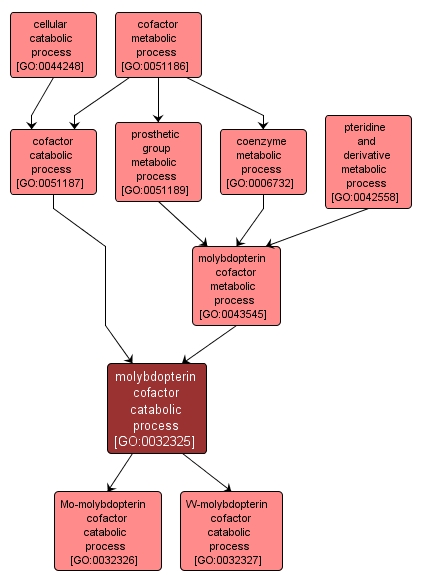| Desc: |
The chemical reactions and pathways resulting in the breakdown of the molybdopterin cofactor (Moco), essential for the catalytic activity of some enzymes, e.g. sulfite oxidase, xanthine dehydrogenase, and aldehyde oxidase. The cofactor consists of a mononuclear molybdenum (Mo-molybdopterin) or tungsten ion (W-molybdopterin) coordinated by one or two molybdopterin ligands. |














